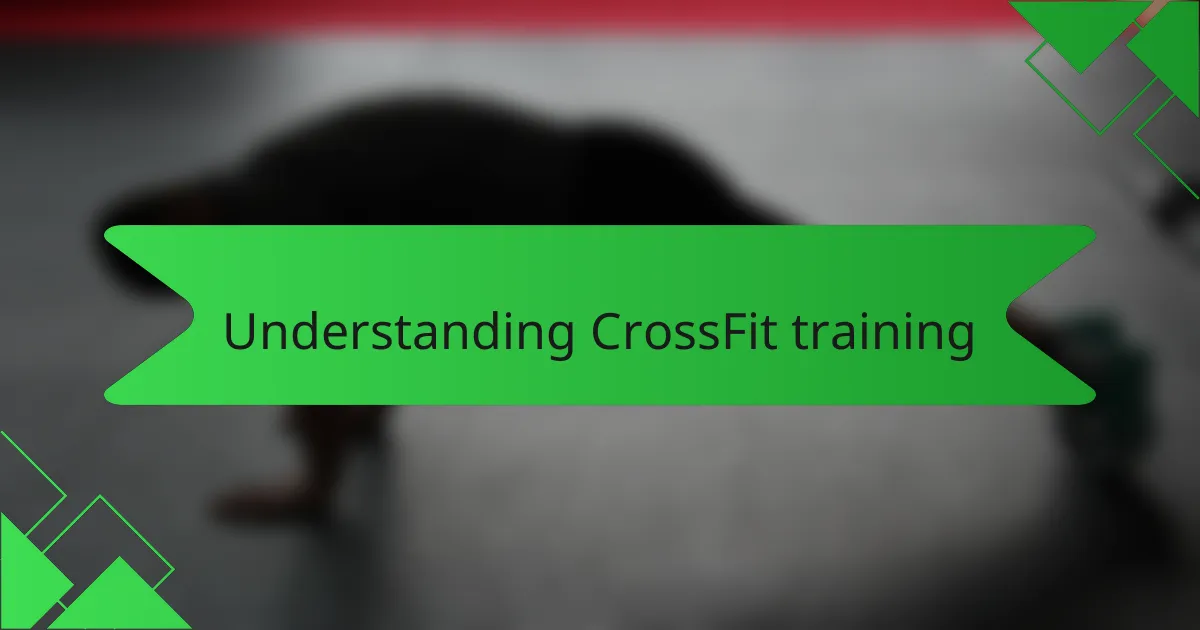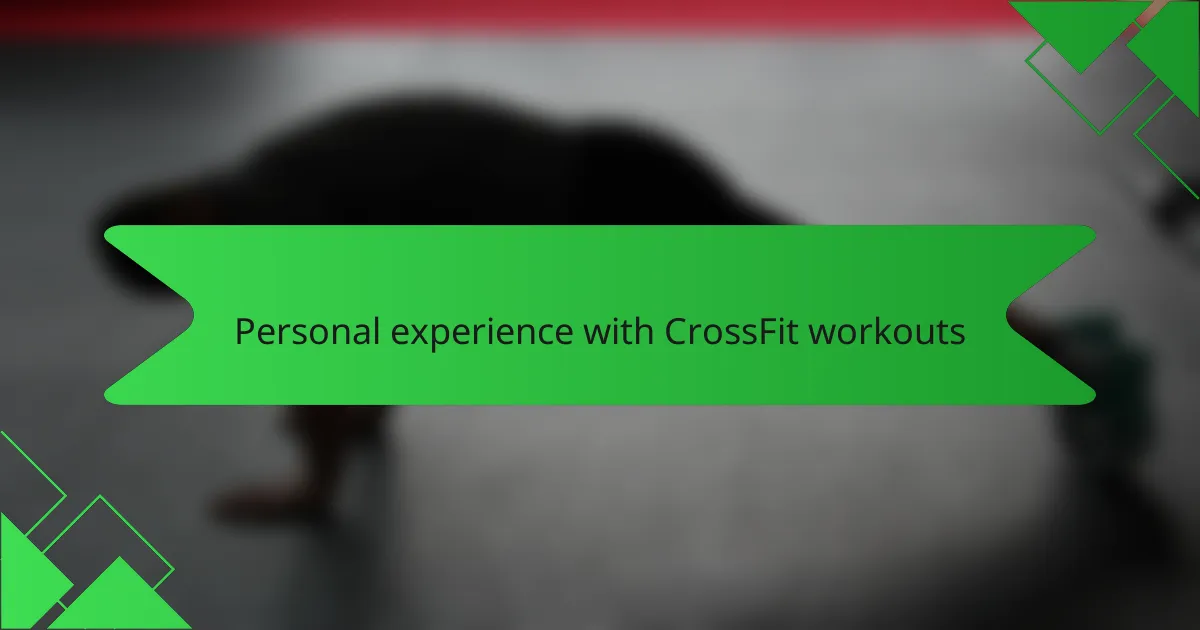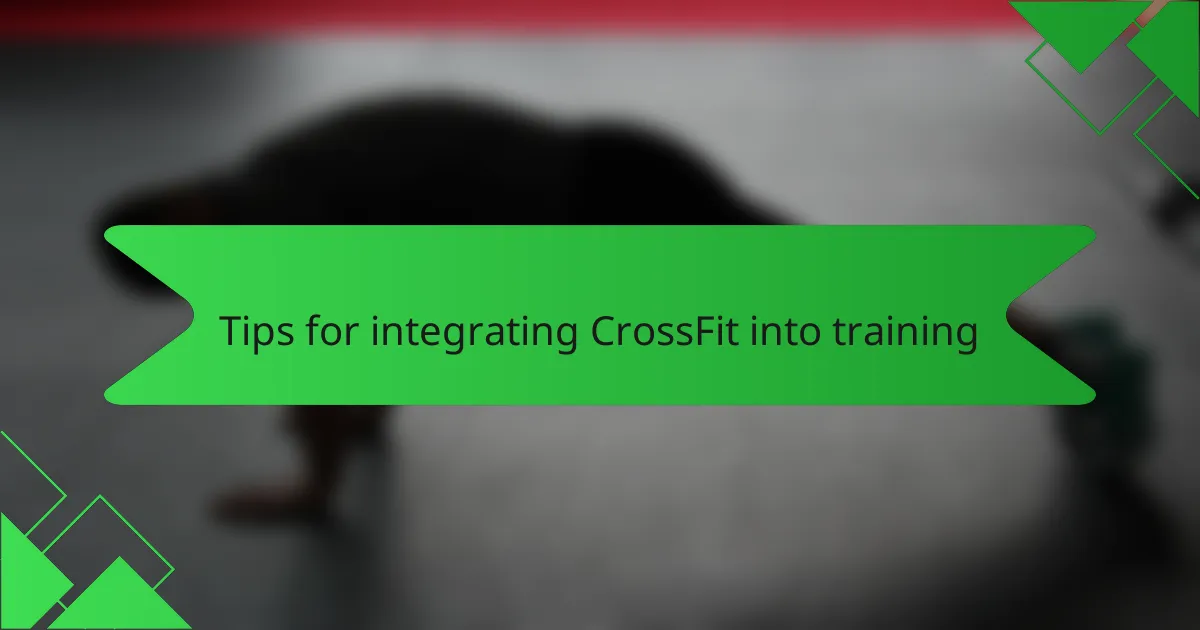Key takeaways
- Obstacle course racing demands a mix of functional strength, cardiovascular endurance, agility, mental toughness, and flexibility.
- CrossFit effectively builds the overall physical attributes necessary for obstacle racing, including strength, endurance, and agility through varied workouts.
- Challenges in combining CrossFit and racing include managing fatigue, recovery, and the mental shift between explosive workouts and endurance demands.
- Integrating CrossFit into training for obstacle races requires consistency, attention to recovery, and focusing on exercises that mimic race conditions.

Introduction to obstacle course racing
Obstacle course racing is more than just a sport; it’s a thrilling test of strength, endurance, and mental grit. From climbing walls to crawling through mud, every obstacle challenges you in unique ways that require a blend of fitness skills. I remember my first race vividly—the mix of excitement and uncertainty pushed me to tap into muscles and skills I didn’t even know I had.
What makes obstacle course racing special is how it combines different physical demands into a single event. You’re not just running; you’re pulling, jumping, balancing, and sometimes even strategizing on the fly. Here are some key physical elements that define the sport:
- Functional strength for climbing and lifting
- Cardiovascular endurance to maintain pace over varied terrain
- Agility and balance for navigating obstacles
- Mental toughness to push through discomfort and fatigue
- Flexibility and mobility to handle unpredictable challenges
These demands have shaped how I view training and prepared me to appreciate the role of CrossFit in excelling at obstacle course races.

Understanding CrossFit training
CrossFit training is a high-intensity fitness program that blends various exercise styles like weightlifting, cardio, and gymnastics. From my experience, it’s incredibly effective for building overall strength and endurance, which are crucial for obstacle racing. What I appreciate most is its unpredictability—I find it keeps both my body and mind sharp, which really translates well when facing the diverse challenges on a course.
| Aspect | CrossFit Training |
|---|---|
| Focus | Mix of weightlifting, cardio, and gymnastics |
| Intensity | High-intensity, varied workouts |
| Adaptability | Constantly varied, prevents plateau |
| Benefit for Obstacle Racing | Builds strength, endurance, agility, and mental toughness |
| Personal Insight | Keeps workouts exciting and directly improves on-course performance |

Benefits of CrossFit for obstacle racing
What I find truly beneficial about CrossFit for obstacle racing is how it builds functional strength that feels directly applicable during a race. When I first started, I struggled with climbing ropes and walls, but after consistent CrossFit sessions focusing on pull-ups and kettlebell swings, those obstacles became much more manageable. Have you ever noticed how training with such varied movements feels like prepping your body for whatever the course will throw at you?
Another huge advantage is the cardiovascular endurance CrossFit develops through its high-intensity workouts. I remember hitting a wall—literally and figuratively—during a race, gasping for breath halfway through. Since incorporating CrossFit “metcons” (short for metabolic conditioning) into my routine, I can push through fatigue with more confidence and keep my pace steady, even when the terrain gets tough. It’s like turning your engine into a well-tuned machine.
Lastly, CrossFit’s emphasis on agility and mental toughness is what I believe sets it apart from traditional training. The varied, unpredictable workouts mimic the chaotic nature of an obstacle race, forcing me to stay mentally sharp and physically ready to adapt on the fly. That feeling of being prepared, both mentally and physically, has made me approach each race with less fear and more excitement. Isn’t that what we all want—to feel ready for anything and enjoy the challenge?

Challenges of combining CrossFit and racing
Combining CrossFit and obstacle racing isn’t always seamless. I’ve noticed that the intense focus on heavy lifts in CrossFit sometimes leaves my muscles a bit too fatigued for the endurance demands of a long race day. Have you ever felt too wiped out after a tough gym session to keep your energy up on the course? That’s a common struggle when trying to balance these training styles.
Another challenge is managing recovery. CrossFit’s high intensity means my body needs ample rest, but racing season often demands back-to-back events or long runs. Finding that sweet spot between pushing hard in CrossFit and having enough fresh legs for races took me a while, and I’m still figuring it out. This juggling act made me realize how important listening to my body truly is.
Lastly, there’s the mental aspect. CrossFit workouts are short and brutal, while obstacle races often test patience over longer distances. Adjusting my mindset to handle both the explosive power of CrossFit and the endurance mindset of racing has been tricky. Do you find it confusing switching gears mentally between these two demanding worlds? I definitely had moments where my brain and body sent mixed signals during training.

Personal experience with CrossFit workouts
When I first started incorporating CrossFit into my obstacle racing training, I was surprised by how much it pushed my limits. The intensity of the workouts mirrored the unpredictable nature of races, which kept me mentally sharp and physically ready for anything on the course.
One of the biggest benefits I noticed was the variety of functional movements, which translated directly into better grip strength, endurance, and overall agility during races. Here are some specific CrossFit elements that impacted my obstacle racing performance:
- High-intensity interval training (HIIT) improved my cardiovascular stamina.
- Olympic lifts like the clean and jerk enhanced my explosive power for obstacles requiring bursts of strength.
- Gymnastics movements increased my body control and coordination.
- Grip-heavy exercises like pull-ups and rope climbs built the upper body endurance essential for monkey bars and wall climbs.
- Functional movements such as kettlebell swings mimicked the dynamic motions I face on varied terrain.
These workouts didn’t just build my physical ability; they also instilled a stronger mental toughness to tackle the unpredictable challenges of each race.

Tips for integrating CrossFit into training
When I first started blending CrossFit into my obstacle race prep, I quickly realized that consistency was key. It wasn’t about diving into every WOD all at once, but about selecting the movements that complemented my specific race challenges. This approach helped me avoid burnout while steadily building the functional strength I needed.
Paying attention to recovery became another important lesson. I learned that pushing too hard without proper rest led to fatigue that impacted both my CrossFit sessions and my obstacle practice. Balancing intensity with recovery made the integration much more sustainable and rewarding.
- Choose CrossFit exercises that mimic obstacle movements (like rope climbs or box jumps)
- Schedule CrossFit sessions on alternate days or lighter training days
- Prioritize form and technique over heavy weights to prevent injury
- Incorporate mobility and stretching routines to enhance flexibility
- Use CrossFit workouts to improve grip strength and cardiovascular endurance

Final thoughts on CrossFit for racing
CrossFit, in my experience, has been a powerful ally for obstacle racing, but it’s not a magic bullet. It builds a strong foundation across multiple fitness domains, yet I’ve learned that balancing intensity and recovery is crucial to avoid burnout. Have you ever felt that thrill when your training actually translates to smoother, faster obstacle clears? That’s the sweet spot CrossFit can help you hit.
I’ve also realized that the mental toughness gained from pushing through tough CrossFit workouts carries over in ways I didn’t expect. When you’re staring down a brutal WOD, that grit becomes second nature on race day. But it takes patience and smart programming to maintain that edge without overheating your system.
Ultimately, CrossFit for racing is about adaptability—for your body and mind. I approach it like a toolbox filled with diverse skills, knowing when to push hard and when to step back. How you integrate it will shape not just your performance but also your enjoyment of the sport. That balance is, in my opinion, the real game-changer.
